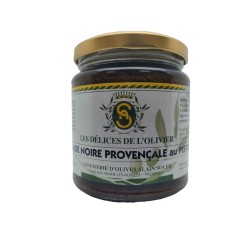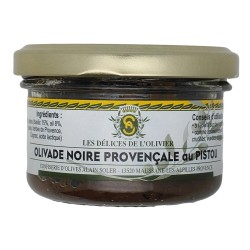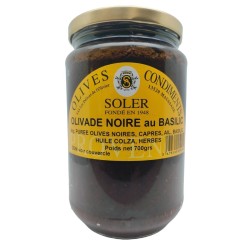
The Mediterranean Tapenade
The Origin of Tapenade: A Culinary Journey from Marseille to Kabylie
I. Introduction
Tapenade, a culinary gem of Provence, evokes enchanting Mediterranean flavors.
Originating from Marseille, its history, which began in 1880 thanks to Chef Meynier, extends far beyond the Provencal borders.
This gastronomic excursion takes us from Marseille to Kabylie, revealing thrilling stories and unforgettable tastes.
Get ready to explore the origins of this delectable concoction that has conquered the palates of the Mediterranean basin.
II. History of Tapenade
A. Creation in Marseille
In 1880, Chef Meynier of La Maison Dorée in Marseille gave birth to tapenade.
By crushing together 200 grams of capers and black olives, he added anchovy fillets and marinated tuna.
Whipped together with spices, olive oil, and cognac, this original composition became the ancestor of black tapenade.
Over time, the recipe evolved, placing olives as the main ingredient, accompanied by capers and anchovies, thus enhancing the flavors.
Today, black tapenade is a culinary delight reduced to the essence of these authentic flavors.
B. Regional Variants
Tapenade, far from being limited to Provence, finds fascinating regional variations.
In Catalonia, olivada, prepared with arbequina olives, offers a unique twist without capers.
In Algeria, a tradition spanning centuries in the Kabylie region gives birth to a version based on olive pomace.
These variants evoke historical and gustatory connections between Mediterranean regions, further enriching the history of tapenade.
C. Ancient Preparations
Long before tapenade was created in Marseille, olive-based sauces were already enjoyed in the Mediterranean basin.
The Romans, from classical times, knew preparations such as samsa, black olive pulp crushed with oil, cumin, and anise, as reported by Columella, a Roman agronomist from the 1st century.
Written references to the popular sauce, in Latin and then Catalan, date back to the Middle Ages, establishing tapenade as a true Mediterranean culinary heritage.
III. The Continued Journey of Tapenade
Tapenade, firmly rooted in Provencal traditions, continues to delight taste buds across the Mediterranean world.
The constant evolution of tapenade, from Marseille to Kabylie, propels it to the heart of modern Mediterranean cuisine.
Its variants, whether black, green, or PDO, weave a gustatory link between different regions.
By discovering the richness of this preparation, one realizes that it transcends geographical boundaries to become a universally appreciated delight.
This culinary concoction finds its way into a variety of Mediterranean recipes, from simple appetizers to more elaborate dishes.
Whether spread on crispy bread, enjoyed on appetizer platters, or used as a stuffing for poultry, tapenade brings an authentic Mediterranean touch to every bite.
By savoring this culinary specialty, one embarks on a sensory journey, exploring flavors inherited from Marseille, spreading across the Mediterranean basin to Kabylie.
Tapenade, with its harmonious blend of olives, capers, and anchovies, truly embodies the essence of Mediterranean cuisine, offering a gustatory experience that transcends time and space.
IV. Detailed Composition of Black Tapenade and Green Tapenade
Black Tapenade
Black tapenade has evolved in its composition since its creation in 1880 by Chef Meynier in Marseille.
Currently, olives play a prominent role in this recipe, followed closely by capers and anchovy fillets.
The latter are judiciously added to enhance the flavors. Garlic, crushed with olive oil, and pepper complete this delectable concoction.
Green Tapenade
As the vibrant twin of black tapenade, green tapenade relies on green olives as the main ingredient.
The recipe varies by using either pine nuts or almond powder.
The presence of capers becomes optional in this version, offering a refreshing alternative to the traditional flavor.
Variants: Black Olivade and Green Olivade
It is interesting to note the existence of variants called black olivade and green olivade.
These two versions, named Black Olivade and Green Olivade, are exquisite creations of Délices de l'Olivier.
Black Olivade is elaborated with carefully selected black olives, while Green Olivade uses high-quality green olives.
The distinctive element of these delights lies in the skillful addition of Pistou (garlic and basil), giving each bite an explosion of authentic Mediterranean flavors.
It is interesting to emphasize that these two variants share the same basic recipe as their tapenade counterpart but stand out due to the absence of anchovies.
This subtle modification provides an ideal option for those who prefer milder flavors and wish to reduce their salt intake.
Enthusiasts of delicate gustatory pleasures will be delighted to discover these unique Olivades, where the simplicity of ingredients highlights the richness and authenticity of Mediterranean flavors.





